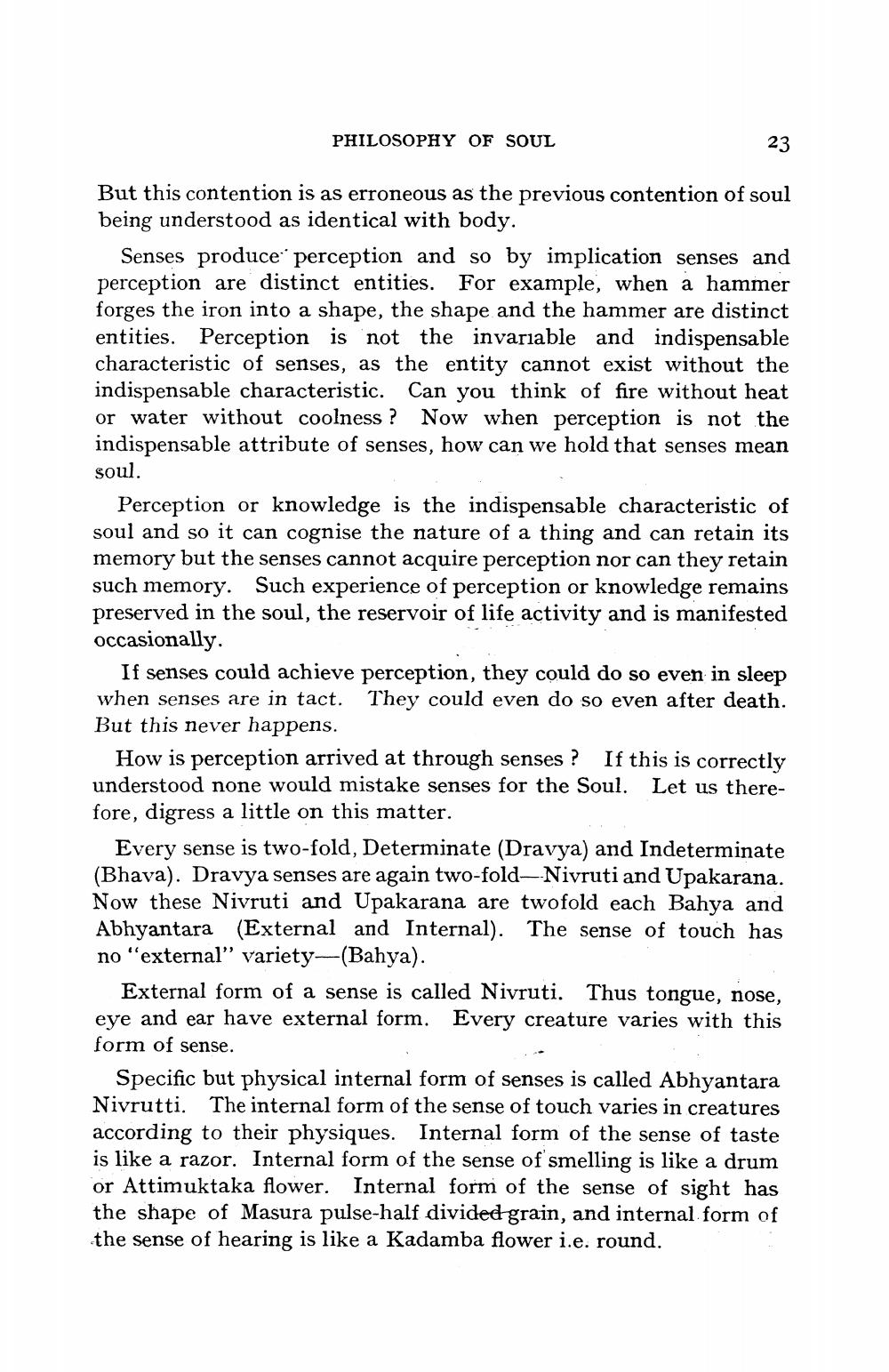________________
PHILOSOPHY OF SOUL
23
But this contention is as erroneous as the previous contention of soul being understood as identical with body.
Senses produce perception and so by implication senses and perception are distinct entities. For example, when a hammer forges the iron into a shape, the shape and the hammer are distinct entities. Perception is not the invariable and indispensable characteristic of senses, as the entity cannot exist without the indispensable characteristic. Can you think of fire without heat or water without coolness? Now when perception is not the indispensable attribute of senses, how can we hold that senses mean soul.
Perception or knowledge is the indispensable characteristic of soul and so it can cognise the nature of a thing and can retain its memory but the senses cannot acquire perception nor can they retain such memory. Such experience of perception or knowledge remains preserved in the soul, the reservoir of life activity and is manifested occasionally.
If senses could achieve perception, they could do so even in sleep when senses are in tact. They could even do so even after death. But this never happens.
How is perception arrived at through senses? If this is correctly understood none would mistake senses for the Soul. Let us therefore, digress a little on this matter.
Every sense is two-fold, Determinate (Dravya) and Indeterminate (Bhava). Dravya senses are again two-fold— Nivruti and Upakarana. Now these Nivruti and Upakarana are twofold each Bahya and Abhyantara (External and Internal). The sense of touch has no "external” variety~(Bahya).
External form of a sense is called Nivruti. Thus tongue, nose, eye and ear have external form. Every creature varies with this form of sense.
Specific but physical internal form of senses is called Abhyantara Nivrutti. The internal form of the sense of touch varies in creatures according to their physiques. Internal form of the sense of taste is like a razor. Internal form of the sense of smelling is like a drum or Attimuktaka flower. Internal form of the sense of sight has the shape of Masura pulse-half divided grain, and internal form of the sense of hearing is like a Kadamba flower i.e. round.




